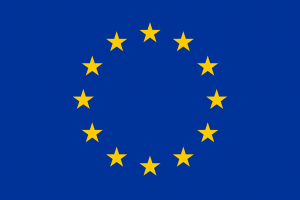Integrated Water Catchment Management and Landscape Protection in Zambia AWARE 2.0

Zambia has large surface and groundwater resources. Yet, particularly in the country’s South, water catchment areas and water security are increasingly under stress due to overallocation, encroachments, deforestation, and unsustainable cultivation practices. Climate change is expected to increase spatial and seasonal water
availability differences. Some of the arms of the Kafue River that once carried water year-round are drying up, which puts livelihoods in danger. Limited water resources risk increasing conflicts among water users and food insecurity for Zambian people.
The project considers the interests of different population groups in the region and aims to protect the environment as a value. In simple terms, the project works
towards a sustainable future for the communities and their environment.
AWARE 2.0 aims to balance environmental health with community prosperity,focusing on sustainable land and forestry management practices and climate resilient
agriculture. The project works with the central government, local authorities and communities in the Lower Sub-Catchment of the Kafue River, in the Southern and
Central Province.
AWARE 2.0 also supports climate adaptation in ecosystems, linking climate, water, agriculture, forestry, and biodiversity and taking into account the interests of different population groups. Under the EU-Zambia Forest Partnership, AWARE 2.0 supports environmental sustainability.
Objectives
AWARE 2.0 aims to improve the integrated management of water catchments, including landscape protection and restoration in the Lower Kafue Sub-Catchment.
Key approaches
The project employs a landscape approach aligned with Integrated Water Resources Management, emphasizing climate adaptation and landscape protection.
The landscape approach is a holistic environmental management strategy that integrates ecological, social, and economic goals across a broad area to address complex sustainability challenges in a
coordinated manner. This strategy benefits households, local communities, and community-based organisations by focusing on nature-based solutions tailored to their specific needs.
To extend the impact beyond direct project areas, AWARE 2.0 strengthens partnerships for sustainable resource mobilization and builds the capacities of various stakeholders.The project also incorporates advanced digital tools to enhance environmental management:
• Geographic Information Systems (GIS) and remote sensing technologies are used to monitor soil
moisture, vegetation cover, and land use changes.
• Data management software improves the precision and efficiency of data collection and analysis.
These technologies are integrated with the EU Green Nexus Programme’s data governance initiatives, ensuring a comprehensive and data-driven approach to resource management. This method facilitates a broader application of successful practices, promoting sustainability and resilience across the project landscape.
Key project outputs are:
• Improved capacities of the central government to execute its mandate for the integrated management of water catchments, including landscape protection, with a focus on climate adaptation.
• Improved capacities of decentralised authorities to plan, protect and sustainably manage water catchment ecosystems with a focus on climate adaptation in the
selected landscape.
• Improved capacities of Water Resources Management governance structures to sustainably manage and resolve water resource disputes/ conflicts in the Lower Kafue Sub-Catchment.
• Successful measures for water catchment management, landscape restoration and protection, and climate adaptation are being implemented on a larger scale in the Lower Kafue Catchment.
Expected results
AWARE 2.0 promotes strategic partnerships with governments to improve policies and resource allocation for the management of watersheds. The project aims to support strong and multi-sectoral planning and implementation of water resources and their ecosystems. Additionally, it provides communities with low-cost, robust, and replicable nature-based solutions to improve water resource management. As access to limited water can lead to a higher risk of conflict, AWARE 2.0 also supports improved management of such conflicts.
Key results are:
• Contributions to a strategy for rainwater harvesting and strategic financing for integrated water catchment management;
• Facilitating 6 partnerships for sustainable resource mobilisation and financing between actors from private sector, government, civil society or local authorities;
• Protection of 213,000 hectares of water, land and forestry areas;
• Up to 120,000 people benefitting from enhanced water security and improved resilience to negative impacts of climate change;
• Development of standardised process for water conflict resolution and mediation;
• Support to 8 decentralised plans to protect and sustainably manage water catchment eco-systems.
PRACTICAL INFORMATION
Anke Peine-Ellis
Cluster Coordinator
GIZ Water and Energy Cluster, 2nd Floor Evexia Office Building
Plot No. 1014 Church Road, Fairview, Private Bag RW 37X
Lusaka, Zambia




